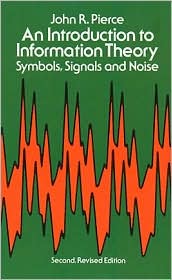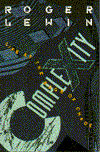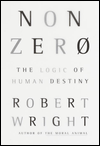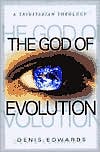On the Need for Boundaries in Nature
The theme of the chapter is the propensity for organic molecules to broker the formation of other organic molecules by dint of what chemists call catalysis. If you bring a sufficient number of potential reactants together with a sufficient number of potential catalysts, a chain reaction of ever-increasing organic molecular diversity is apt to ensue. This is the condition Kauffman labels "supracriticality."
On the other hand, if either the number of potential reactants or the number of potential catalysts is brought below some critical value, the system returns to being "subcritical." The diversity of novel molecules will, in this case, never mushroom.
Using a little back-of-the-envelope calculating, Kauffman indicates that the biosphere as a whole is supracritical. If you somehow brought all the perhaps 10,000,000 small organic molecules on the face of the earth together with all the 1 trillion or so proteins, there would be a chaotic explosion of never-before-seen organic molecules (see p. 123).
A whole lot of them would be poisonous to any particular type of cell of any living species. That's one reason why there have to be cell membranes that allow only certain kinds of "foreign" molecules to pass through.
And it's one reason why humans and other organisms eat their food rather than fusing with it (p. 123). We have to break down the organic molecules in the organisms we eat and then build them back up into possibly different molecular species that won't throw our cells into a supracritical tizzy.
The biosphere as a whole is supracritical, yet all cells are necessarily subcritical. Is there a happy medium anywhere in nature? Kauffman says there is.
He says that ecosystems, each made up of some number of interacting species, each coming in contact with some number of exogenous organic molecules that arrive possibly from other ecosystems, evolve to the line between subcritical and supracritical behavior.
For example, the diverse bacteria and other mini-critters in a human intestinal tract are an ecosystem (see p. 127). Each such single-celled organism is presumably subcritical, molecularly speaking. Even the propensity of the bacterial species to trade their various organic molecule types will not bring chaos and death to any of them.
They are also bathed in a certain number of exogenous types of organic molecules from the food we eat. As long as that number does not take the ecosystem supracritical, well and good.
If the ecosystem as a whole goes supracritical, however, some bacterial species will respond to the novel poisons that are inevitably introduced by going extinct, at least as far as the gut-internal ecosystem itself is concerned. On the other hand, if the ecosystem as a whole is well below the subcritical-supracritical line, it will tend to take on more bacterial species, either by mutation or by migration from outside the body.
In other words, the ecosystem will gravitate over time to the subcritical-supracritical edge. Again we encounter an abstract edge much like the edge of chaos to which, Kauffman says, natural selection "tunes" biological systems which need to evolve gracefully but which also need to avoid the perils of chaos proper.
Extending the analogy, we can think of the supracritical biosphere-as-a-whole as, in the absence of internal buffering mechanisms, chaotic. Each subcritical cell with its protective membrane is well into the ordered regime. And each ecosystem is poised at, or in the ordered regime near, the edge of chaos.
Playing into nature's ability to keep its balance in this way are, of course, other boundaries at other levels of organization ... not just the cell membrane at the level of the cell. There is the very real boundary between one organism and the next. And, in an ecosystem, there is the more abstract boundary between species — or, more accurately, between species' populations.
These boundaries introduce the possibility of selfishness, witting or unwitting. It can be a dog-eat-dog (or cow-eat-grass) world. At the level of an ecosystem, the introduction of a foreign species can drive existing species beyond the vanishing point to extinction.
The boundaries at various organizational levels also introduce the possibility of you-scratch-my-back-I'll-scratch-yours mutualism — again, witting or unwitting. Peeking ahead, I'm aware that Kauffman finds cooperation a much more potent evolutionary force than competition. I don't want to get ahead of him on this score, but, for now, I would like to point out certain implications of the above for religion.
In struggling to come to a belief in God, some people ask this question: if God is so good, why is nature so cruel?
If we evolved, as Darwin said, from apelike ancestors, nature's capacity for cruelty implicates us — as our "inhumane" behavior often so amply bears out. Would God have created us "in his own image," bearing such a legacy from our forebears?
Killing and eating other living things would seem, indeed, to be "the root of all cruelty" — even when we humans, as "highly evolved" as we think we are, just kill and don't eat. No animal would have to kill to eat (or for any other purpose, really) if we could just fuse with other organisms on an equal-to-equal basis. (OK, I admit that plants don't kill to eat. But plants don't have brains. What I'm saying applies to planets like ours, some of whose organisms have to eat to support brains.)
As Kauffman points out, such a meld-with-your-meat strategy would mean the end of life on this planet. As the supracriticality of the biosphere-as-a-whole invaded every living cell, poisoning all, the biosphere-as-a-whole would simply die. And so would we. (Or, OK, maybe there would just be plants.)
Nature is "red in tooth and claw," if Kauffman is right about how self-organized complexity works, because that's the only way it can be. There have to be boundaries at various levels of organization, with the attendant possibility of competition and cruelty. If God wanted it to be any other way, he'd have had to set us and our fellow creatures up as dummies in a heavenly wax museum, not in a real world like ours!


















0 Comments:
Post a Comment
<< Home